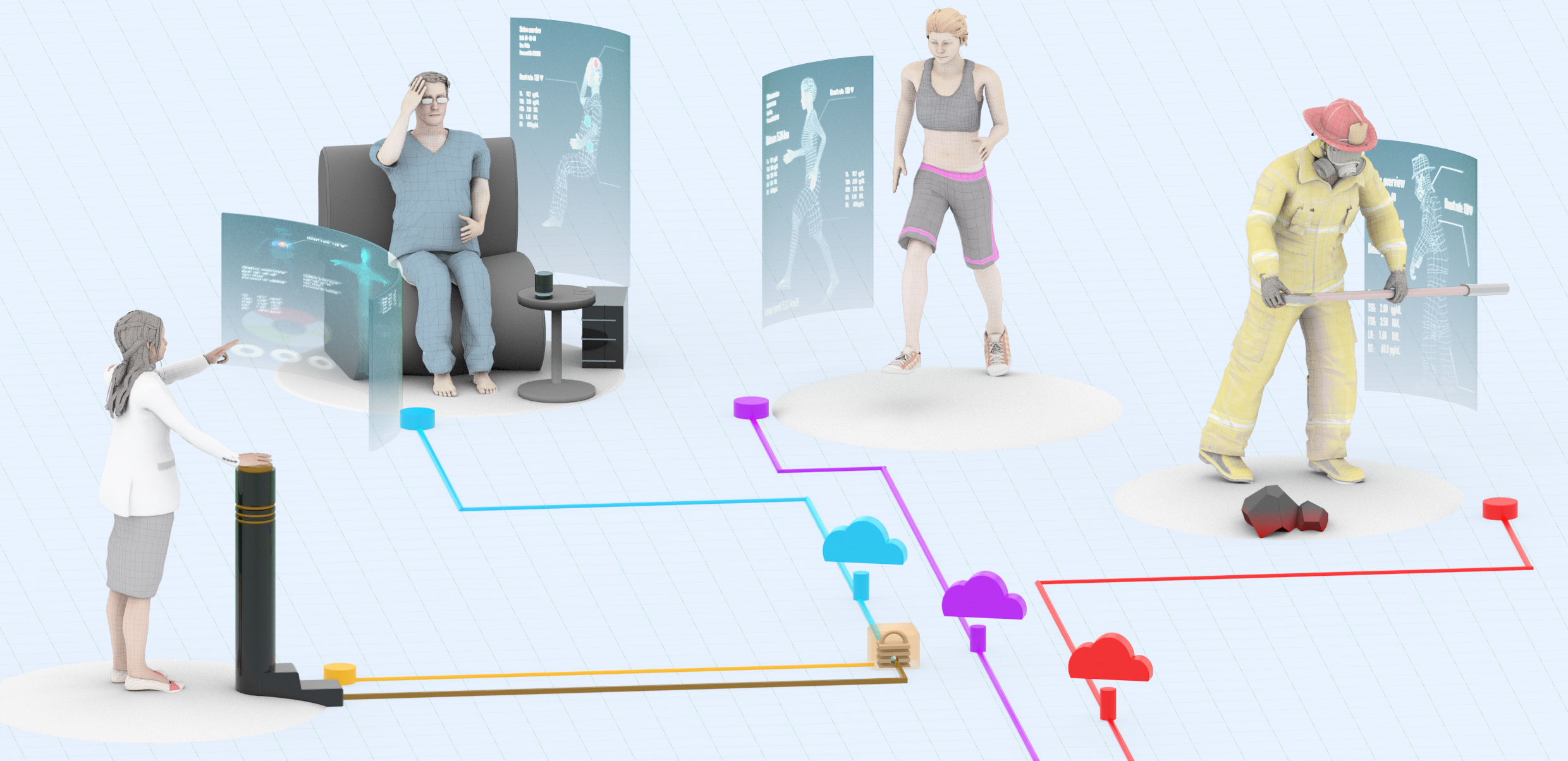KAUST Smart-Health
Featured Research
Energy Efficient Capacitive Body Channel Access Schemes for Internet of Bodies
Abstract
The Internet of bodies is a network of wearable, ingestible, injectable, and implantable smart objects located in, on, and around the body. Although radio frequency (RF) systems are considered the default choice for implementing on-body communications, which need to be localized in the vicinity of the human body (typically < 5 cm), highly radiative RF propagations unnecessarily extend several meters beyond the human body. This intuitively degrades energy efficiency, leads to interference and co-existence issues, and exposes sensitive personal data to security threats. As an alternative, the capacitive body channel communication (BCC) couples the signal (between 10 kHz-100 MHz) to the human body, which is more conductive than air. Hence, BCC provides a lower propagation loss, better physical layer security, and nJ/bit to pJ/bit energy efficiency. Accordingly, this paper investigates orthogonal and non-orthogonal capacitive body channel access schemes for ultra-low-power IoB nodes. We present the optimal uplink and downlink power allocations in closed-form, which deliver better fairness and network lifetime than benchmark numerical solvers. For a given bandwidth and data rate requirement, we also derive the maximum affordable number of IoB nodes for both directions of orthogonal and non-orthogonal schemes. [READ MORE]
The Internet of Bodies: A Systematic Survey on Propagation Characterization and Channel Modeling
The Internet of Bodies (IoBs) is an imminent extension to the vast Internet of Things domain, where interconnected devices (e.g., worn, implanted, embedded, swallowed, etc.) are located in-on-and-around the human body form a network. Thus, the IoB can enable a myriad of services and applications for a wide range of sectors, including medicine, safety, security, wellness, entertainment, to name but a few. Especially, considering the recent health and economic crisis caused by the novel coronavirus pandemic, also known as COVID-19, the IoB can revolutionize today’s public health and safety infrastructure. Nonetheless, reaping the full benefit of IoB is still subject to addressing related risks, concerns, and challenges. Hence, this survey first outlines the IoB requirements and related communication and networking standards. Considering the lossy and heterogeneous dielectric properties of the human body, one of the major technical challenges is characterizing the behavior of the communication links in-on-and-around the human body. Therefore, this article presents a systematic survey of channel modeling issues for various link types of human body communication (HBC) channels below 100 MHz, the narrowband (NB) channels between 400 and 2.5 GHz, and ultrawideband (UWB) channels from 3 to 10 GHz. After explaining bio-electromagnetics attributes of the human body, physical, and numerical body phantoms are presented along with electromagnetic propagation tool models. Then, the first-order and the second-order channel statistics for NB and UWB channels are covered with a special emphasis on body posture, mobility, and antenna effects. For capacitively, galvanically, and magnetically coupled HBC channels, four different channel modeling methods (i.e., analytical, numerical, circuit, and empirical) are investigated, and electrode effects are discussed. Finally, interested readers are provided with open research challenges and potential future research directions. [READ MORE]

Image credits: 2021 KAUST; Heno Hwang
References
Alamoudi, A. Celik, A. & Eltawil, A.M. Energy efficient capacitive body channel access schemes for Internet of Bodies. Proceedings of the IEEE Global Communications Conference (GLOBECOM), Madrid, Spain, December 2021. https://repository.kaust.edu.sa/handle/10754/669768
Celik, A, Salama, K.N. & Eltawil, A.M. The Internet of Bodies: A systematic survey on propagation characterization and channel modeling. IEEE Internet of Things Journal. https://ieeexplore.ieee.org/document/9490369
Principal investigator
Ahmed Eltawil
Professor, Electrical Engineering
First authors:

Abdulkadir Çelik, Research Scientist

Abeer AlAmoudi, M.S. Student.

